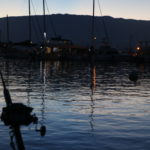Effective immediately, the Board of Land and Natural Resources (BLNR) approved the re-opening of eight Bottomfish Restricted Fishing Areas (BFRAs), which were closed to fishing since 2007.
Nearly three years ago, four of twelve BFRAs were reopened for both commercial and non-commercial fishing of Deep-7 bottomfish species.
In its presentation to the BLNR, the DLNR Division of Aquatic Resources (DAR) said it “believes that opening of all twelve of the BFRAs (four opened as of July 2019), will not adversely affect the overall sustainability of the Main Hawaiian Island Deep-7 fishery, and will be a benefit to local commercial and non-commercial bottom fishers.”
DAR representatives told land board members that recently developed Annual Catch Limit (ACL)-based management, coupled with rules and strategies, “can together effectively manage the fishery.” These include:
- Management informed by stock assessments from the National Marine Fisheries Service (NMFS) Pacific Islands Fisheries Science Center (PIFSC)
- Mandatory bottomfish vessel registration
- Expedited catch reporting
- Expedited dealer reporting
- Gear restrictions
- Commercial size limits
- Non-commercial bag limits
The MHI Deep-7 fishery exists in both state and federal waters, and is managed under a cooperative, joint approach. The State, the NMFS Pacific Islands Regional Office (PIRO), and the Western Pacific Regional Fishery Management Council (WPRFMC) develop complementary regulations based on the best science available. The agencies agree on one set of regulations to make compliance easier.
BFRAs designation changed over the years, after being established in 1998, with an original 19 areas, and then replaced in 2007 by the twelve in place today. Data gathering and methodologies also changed since establishment. The 2019 proposal, to open just four of twelve bottom fishing areas, was based on an abundance of caution and the desire to take a conservative approach pending further monitoring.
Over the past ten fishing years the MHI Deep-7 fishery has landed an average of 232,586-lbs. of mixed Deep-7 species each year, less than 50% of the current 492,000-pound ACL.
The BLNR is requiring DAR to provide an update after the next Deep-7 stock assessment is completed.
Photo credit: DLNR
